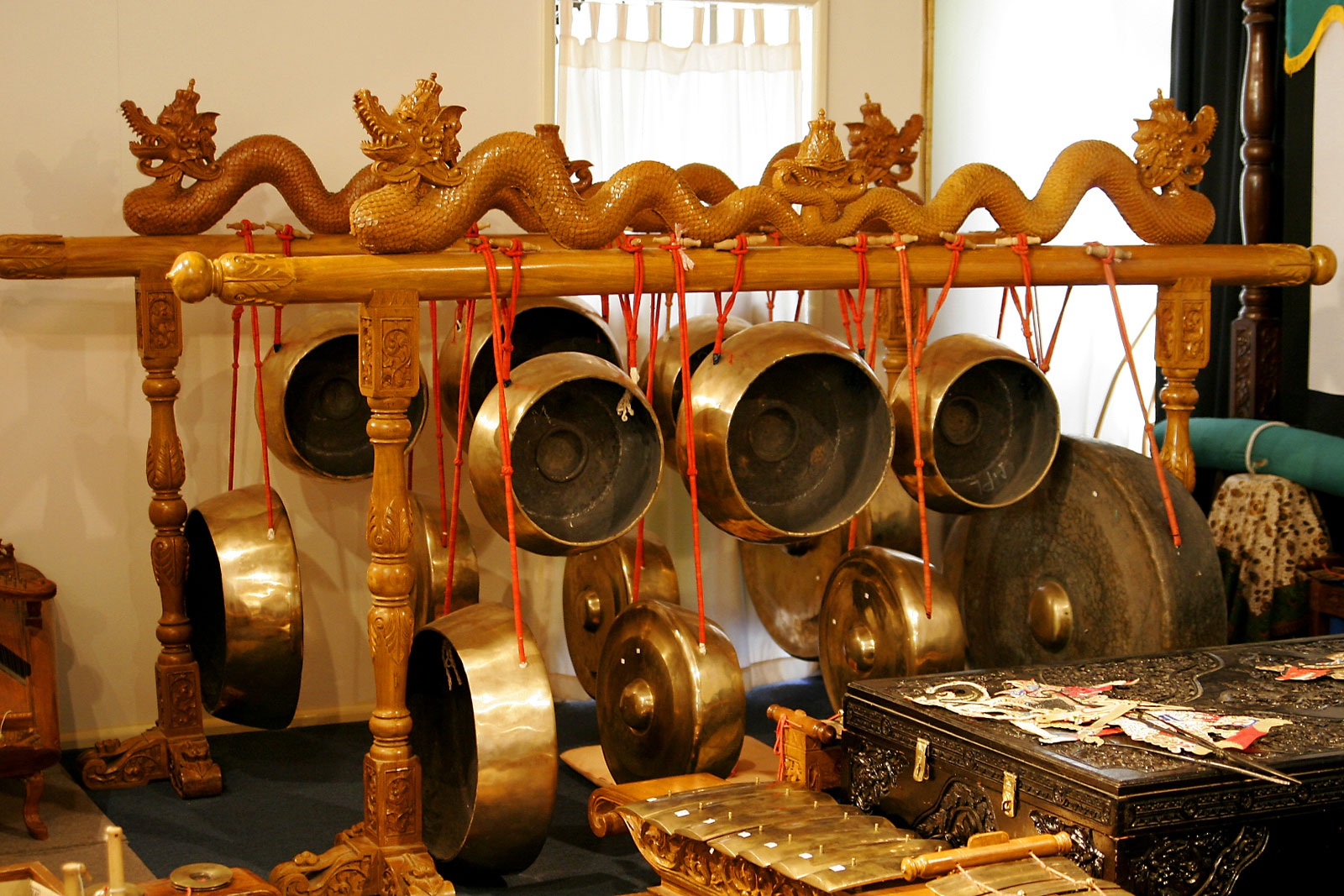Kempul
 In the middle of the gamelan, the 'skeletal' melody called the balungan is played on bronze metallophones. The balungan is puntuated by the larger gongs and horizontally-mounted gongs (kenong, kethuk, and kempyang) at the back of the gamelan." "The kempul, a middle voice gong, punctuates half way to the mid-points of the metric cycle, which is played by the kenong (the kettle gongs)." In all the central Javanese traditions, the pieces known as Ayak-ayakan, Srepegan, and Sampak are united by a single relationship between kempul and kenong: one kempul beat coinciding with every 2nd kenong beat."
In the middle of the gamelan, the 'skeletal' melody called the balungan is played on bronze metallophones. The balungan is puntuated by the larger gongs and horizontally-mounted gongs (kenong, kethuk, and kempyang) at the back of the gamelan." "The kempul, a middle voice gong, punctuates half way to the mid-points of the metric cycle, which is played by the kenong (the kettle gongs)." In all the central Javanese traditions, the pieces known as Ayak-ayakan, Srepegan, and Sampak are united by a single relationship between kempul and kenong: one kempul beat coinciding with every 2nd kenong beat."Theres are two racks of gongs in a gamelan orchestra because of the two gamelan scales or laras." "These two tuning systems are called slendro and pelog, thus the full gamelan is actually a double set. Usually the slendro set faces the front and the pelog set the side." The two sets are never played simultaneously. "The slendro tuning consists of five notes per octave and the five intervals consist of small and medium steps. The pelog has seven pitches per octave"
In the older ensembles of east Java, one usually finds only one kempul, tuned to a pitch 6 or pitch 5, and one Gong ageng, with no siyem or gong suwukan. Following the augmentation of ensembles in central Java over the last century, however, the east Javanese have added one or two siyem and three or four kempul for each tuning system in many ensembles.
Related Sites for Kempul
- FREE : World MIDI, Indonesian MIDI, Malaysian MIDI, Keyboard Style ... read Kempul

No comments:
Post a Comment